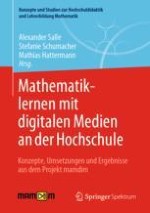2021 | OriginalPaper | Chapter
7. Umgang von Studierenden mit Lage- und Streumaßen: Quantitative Leistungsdaten und individuelle Fehlermuster
Authors : Mathias Hattermann, Daniel C. Heinrich, Alexander Salle, Stefanie Schumacher
Published in: Mathematiklernen mit digitalen Medien an der Hochschule
Publisher: Springer Fachmedien Wiesbaden
Activate our intelligent search to find suitable subject content or patents.
Select sections of text to find matching patents with Artificial Intelligence. powered by
Select sections of text to find additional relevant content using AI-assisted search. powered by
